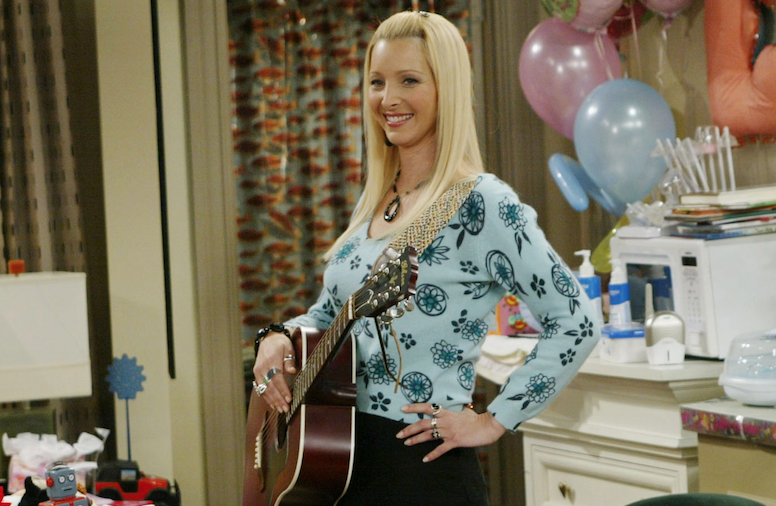Phoebe Buffay carried more than a few Friends episodes. As the source of our comic relief, the ‘relatable one’ for many, and the unsung hero of kindness— Ms. Buffay was often the breath of fresh air for the decade-running sitcom.
One of the defining characteristics of Lisa Kudrow’s Phoebe was undoubtedly her courage in confidence. Tell Pheobe she can’t do something, and she’ll tell you a backstory about how she’s already done it (potentially in song).
This largely reflected Kudrow’s own confidence beyond her character.
So when the star recently chatted about her body image and ‘jarring’ experiences that shaped her perspective of herself, many were surprised that her Friends days came up.
View this post on Instagram
Sitting down to chat on the Podcrushed podcast, Kudrow expressed that her first real dealings with body insecurity link back to the show, co-starring with Jennifer Aniston and Courtney Cox.
Of how she perceived herself prior to the showstopping role, she said:
“I thought I was just really skinny. I can do whatever, [but] no, especially in high school.”
“It wasn’t until Friends that I realised, ‘Oh, I don’t look like I thought I looked.'”
Continuing, she shared:
“And that’s what was so jarring, and that’s when it was like, ‘Oh I’ve got to actually lose weight? I have to diet? Shoot.”
Now if you’re sitting wondering why a young, conventionally thin and stunning Lisa thought like that, let’s cast our minds back to the 90s.

Warner Bros. Television/Getty Images
‘Heroin Chic’ reigned supreme. Kate Moss’s ‘nothing tastes as good skinny feels’ was an unfortunate mantra and there was very little room for discourse on body positivity. Even if you were skinny, there was a socially constructed idea that played on ‘the right kind of skinny’, which was blasted all over magazine covers, in films and music videos.
Kudrow went on to share that comparing herself to Aniston and Cox warped her image. “And I’m not trying to say I was overweight either. I was not. I just had no idea the shape of my actual body.”
She went on to share that she learned how to love herself —as is—with a simple mantra that anyone still dealing with the 90s and 2000s after effects can appreciate:
“I just realised, ‘Oh no, it’s okay. This is just what I look like. That’s okay. Do what you need to do to be healthy, but this is your body and it’s okay.”
Body dysmorphia and Hollywood
A lot of people (men included) have openly talked about how they’re still dealing with the after-affects of body influence from eras gone by. For many, this translated to mental traps like body dysmorphia.
When we talk about body dysmorphia, two highly influential factors join the conversation: the media and Hollywood. Westernised standards of beauty, especially in the 90s when high fashion reeled in a different kind of aesthetic to the supermodel era of the 80s, horrifically and (until many years later) unapologetically messed with a generation’s images of self, as well as those of their children.
In simple terms, body dysmorphia is a lot more than simply thinking you ‘don’t look how society wants you to.’ It’s a consistent and persistent internalised pressure that amplifies your anxiety around even the tiniest perceived flaws in your appearance, particularly related to the body.
It’s also classified as a mental health condition; a subset of Obsessive Compulsive Disorder. Last year, the International OCD Foundation shared that two-thirds of people with BDD experience the disorder’s onset before age 18. Shaping young minds? Not like this…
Moreover, it isn’t a quick fix. BDD is repetitive by nature and, if the name wasn’t telling enough, morphs one’s sense of reality.To the person dealing with BDD, what they see as amplified flaws are very real to them— even if to the onlooker, it appears like they’re a beautiful person merely ‘fishing for compliments’.
Sentiments like the above are often more harmful than helpful.
ALSO SEE: So your loved ones have anxiety – how to be an ally
Some researchers share that treatment includes cognitive behavioural therapy and medication.
Are we returning to a problematic era for body image?
Like all trend cycles, recycling is simply part of the industry. But the return of the size 0 as a standard? We could’ve done without it. Some are blaming high fashion brands like Miu Miu (or at least their revived mini-mini skirt) and even Coperni with their spray-paint dress show-stopper on Bella Hadid for the blast from the past.
Although we’ve made somewhat progressive movements toward body positivity, promotions of unhealthy and unrealistic standards have unfortunately made their way back onto our feeds.
As Savanna Douglas writes:
“One thing that has helped me create healthy distance between myself and the negative beliefs I have reinforced about body is learning more about BDD. Following other women who struggle with it, who speak about it openly. Being equipped with knowledge about BDD and how it commonly acts up, gives me just a little more space to stop and think about it when I’m in the thick of it.”
ALSO SEE:
How to love yourself when you’ve got body dysmorphic disorder
Feature Image: David Hume Kennerly/ Getty

